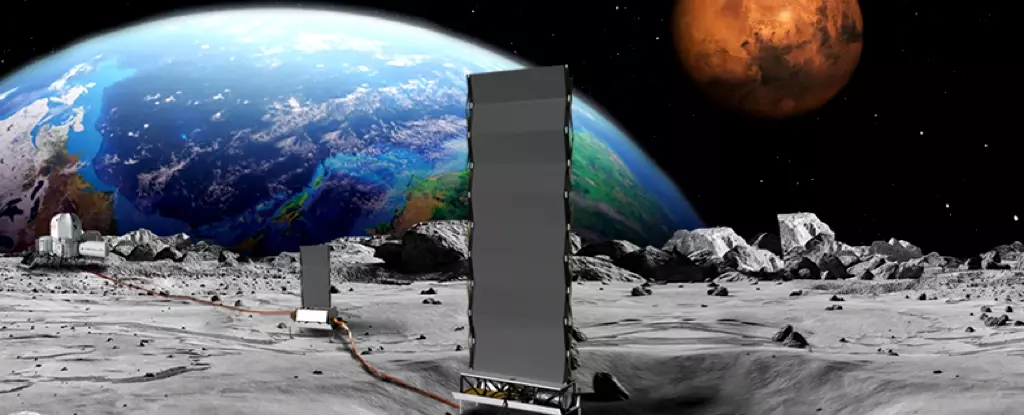Living and working on the Moon comes with a multitude of challenges. One of the most critical requirements for successful lunar missions is power. Without a reliable source of energy, the prospects of long-term exploration and scientific endeavors on the lunar surface would be bleak. Recognizing the importance of power systems, NASA has initiated the Fission Surface Power Project as part of its Artemis program. This groundbreaking project aims to develop a small nuclear fission reactor capable of generating electricity on the Moon. With the initial phase recently completed, the future of lunar bases looks brighter than ever.
NASA awarded three $5 million contracts to commercial partners, namely Lockheed Martin, Westinghouse, and IX, to develop innovative designs for fission reactors. Each partner was tasked with creating a comprehensive system that includes reactor design, power conversion, heat rejection, and power management and distribution. Moreover, the partners were required to provide estimated costs and development plans to ensure the feasibility of their designs. The ultimate objective of this project is to establish a power system that can sustain lunar bases for a decade, while also paving the way for future systems on Mars.
In the quest for sustainable and long-term power solutions, nuclear power emerges as the most promising option. Trudy Kortes, the program director of Technology Demonstration Missions at NASA Headquarters, emphasizes the need for a safe, clean, and reliable power source to support lunar exploration. The lunar night poses immense technical challenges, as solar power becomes unavailable during this period. Nuclear reactors provide a critical advantage by operating independently of the Sun, ensuring an uninterrupted power supply throughout the 14-night-long lunar night. By showcasing the viability of nuclear power on the Moon, NASA aims to inspire confidence in its potential as a trusted power source.
While nuclear power will play a significant role in sustaining lunar bases, NASA acknowledges the importance of a diversified power portfolio. Solar power remains a dependable source of energy and will complement the nuclear installations. Solar panels will continue to supply electricity during daylight hours, while nuclear reactors take over during the lunar night or in areas with limited sunlight. This hybrid approach ensures continuous power generation, mitigating the risks associated with relying solely on one energy source. With plans to last at least a decade without human intervention, these reactors contribute to the safety and efficiency of lunar missions by minimizing radiation exposure and allowing astronauts to focus on scientific exploration.
To meet the demanding requirements of lunar power generation, the reactor designs must meet specific criteria. The reactors should weigh under six metric tons while producing 40 kilowatts of power. This capacity is sufficient to power habitats, grids, and scientific experiments, effectively demonstrating the system’s capability. For context, this amount of power is equivalent to the energy needed to sustain 33 homes on Earth. By establishing these parameters, NASA provides a framework for companies to explore new avenues and unleash their creativity in designing innovative reactor systems.
With valuable feedback from commercial partners, NASA is preparing for a Phase 2 solicitation in 2025. The agency aims to refine and enhance the existing designs, ultimately leading to the deployment of lunar power systems in the early 2030s. This significant milestone will mark a new era of enhanced power supply on the Moon, revolutionizing the possibilities for sustained exploration and scientific breakthroughs. As lunar bases thrive with the assistance of fission reactors, NASA envisions a future where Mars benefits from a tailored nuclear fission reactor technology.
The Fission Surface Power Project represents a groundbreaking initiative by NASA to revolutionize power generation on the Moon. By harnessing the potential of nuclear fission, lunar bases will have access to a reliable and uninterrupted source of energy. This project not only ensures the success and sustainability of future lunar missions but also paves the way for advancements in power generation technologies on other celestial bodies. As humanity embarks on the quest for interplanetary exploration, improved power systems stand as a cornerstone of our ambitious aspirations.


Leave a Reply